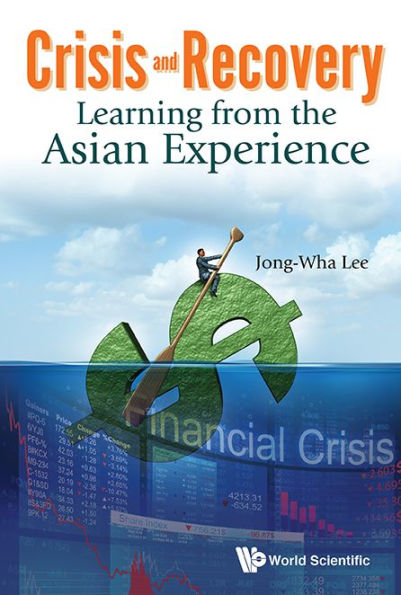Table of Contents
About the Author vii
Acknowledgements ix
List of Tables xix
List of Figures xxv
Introduction xxxi
Part 1 Anatomy of Asian Financial Crises 1
Chapter 1 The Determinants and Prospects of Economic Growth in Asia 3
1.1 Introduction 3
1.2 The Basic Growth Framework 5
1.3 Estimation Results 19
1.4 Economic Growth of the Asian Countries in Comparative Perspective 27
1.5 The East Asian Financial Crisis 30
1.6 Conclusions 35
References 37
Chapter 2 Overinvestment, Collateral Lending, and Economic Crisis 41
2.1 Introduction 41
2.2 The Model 44
2.3 Implications 53
2.4 Capital Market Liberalization 59
2.5 Interpretation and Discussion of the Asian Crisis 64
2.6 Concluding Remarks 69
References 70
Chapter 3 Financial Reform and the Efficiency of Credit Allocation in Korea 73
3.1 Introduction 73
3.2 Financial Sector and Financial Reform in Korea 75
3.3 Testing the Efficiency of the Financial System 79
3.4 Concluding Remarks 86
References 88
Chapter 4 Growth and Investment in East Asia Before and After the Financial Crisis 91
4.1 Introduction 91
4.2 Recent Economic Performance in the East Asian Economies 92
4.3 Cross-Country Analyses of Economic Outcomes 108
4.4 Concluding Remarks 130
References 131
Part 2 Asian Financial Crises: Responses and Lessons 133
Chapter 5 Recovery and Sustainability in East Asia 135
5.1 Introduction 135
5.2 Cross-Country Patterns of Adjustment to Currency Crisis 138
5.3 Assessments of the Recovery Process in East Asia 158
5.4 Prospects for Long-Term Growth in East Asia 181
5.5 Concluding Remarks 185
References 186
Chapter 6 Crisis and Recovery: What We Have Learned from the South Korean Experience? 189
6.1 Introduction 189
6.2 The Role of Macroeconomic Policies in the Recovery Process 192
6.3 The Role of Financial Market Development and Structural Reforms 200
6.4 Conclusion 212
References 213
Chapter 7 Financial Crisis and Credit Crunch in Korea: Evidence from Firm-Level Data 215
7.1 Introduction 215
7.2 Monetary Contraction and Credit Crunch 218
7.3 Credit Allocation During the Crisis: Empirical Evidence 226
7.4 Conclusions 243
References 245
Chapter 8 IMF Programs: Who Is Chosen and What Are the Effects? 249
8.1 Introduction 249
8.2 Characteristics of the IMF 251
8.3 Determination of IMF Loan Programs 254
8.4 Economic Effects of IMF Loan Programs 269
8.5 Concluding Observations 285
References 287
Chapter 9 Exchange Rate Regime and Monetary Policy Independence in East Asia 291
9.1 Introduction 291
9.2 Exchange Rate Regimes in East Asia 293
9.3 Empirical Test of Monetary Policy Independence 295
9.4 Empirical Results 300
9.5 Conclusion 307
References 312
Part 3 Global Financial Crisis and Challenges to Asia's Sustained Growth 315
Chapter 10 Crises in Asia: Historical Perspectives and Implications 317
10.1 Introduction 317
10.2 Data and Methodology 318
10.3 Stylized Facts of Economic Crises in Asia 322
10.4 The Global Crises and Asia 340
10.5 Concluding Remarks 351
References 352
Chapter 11 Global Financial Turmoil: Impact and Challenges for Asia's Financial Systems 355
11.1 Introduction 355
11.2 The Recent Turmoil and Background 357
11.3 Impact on Asian Financial Markets and Further Potential Spillover 362
11.4 Challenges from the Changing Financial Landscape 375
11.5 Policy Implications 384
A.1 Data Description 388
A.2 Empirical Methodology 389
A.3 Specification Issues 391
References 392
Chapter 12 Real and Financial Integration in East Asia 395
12.1 Introduction 395
12.2 Price and Quantity Measures of Integration 398
12.3 Empirical Model for Macroeconomic Consequences 408
12.4 Results for Macroeconomic Consequences 412
12.5 Conclusion 414
References 417
Chapter 13 Emerging Asia: Decoupling or Recoupling 421
13.1 Introduction 421
13.2 Economic Integration and the Decoupling of Asia: Literature Survey 424
13.3 Evolution and Nature of Macroeconomic Interdependence 428
13.4 Empirical Analysis 443
13.5 Concluding Remarks 453
References 454
Chapter 14 Financial Integration in Emerging Asia: Challenges and Prospects 457
14.1 Introduction 457
14.2 Financial Integration Trends in Asia 459
14.3 Financial Integration and Risk of Contagion 472
14.4 Conclusions and Policy Implications 481
References 483
Chapter 15 Will the Renminbi Emerge as an International Reserve Currency? 487
15.1 Introduction 487
15.2 From a Single to Multicurrency Reserve System 493
15.3 Empirical Investigation of Reserve Currency Shares 505
15.4 Monetary Cooperation and an Asian Common Currency 513
15.5 Concluding Remarks 516
References 517
Chapter 16 Economic Growth in Asia: Determinants and Prospects 521
16.1 Introduction 521
16.2 Sources of Growth, 1981-2007 525
16.3 Determinants of Growth 535
16.4 Estimation Results 540
16.5 Growth Projections, 2011-2030 543
16.6 Conclusion 557
References 558
Index 562




